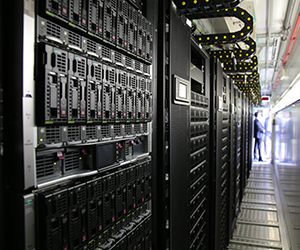Today, edge data centers are highly important as the nature of work performed by IoT devices within commercial environments is creating a need for much faster connections between data centers or cloud and the devices that are being widely used through remote working and cross-border collaborations. This means that people and businesses are more dependent on data centers.
Data is the currency of success. Companies depend on data to make better decisions, establish competitive advantage, and drive revenues. With companies expediting their digital transformation now more than ever, edge computing can unleash the power of local data that is generated from digitized and connected devices of all kinds.
Edge computing is therefore not a hype. It is a real-world data processing solution that helps companies tackle latency issues, operational strain, and security, especially in the current environment. Gartner estimates that 75% of enterprise data is expected to be created and processed at the edge by 2025, and a 2019 report by Analysys Mason suggests that enterprises will spend an average of 30% of their IT budgets on edge computing over the next three years.
Increase in demand must be met with sustainable data centers.
According to Tony Kang, vice-president, Secure Power Division of Schneider Electric Philippines, “To meet increasing demand, it is absolutely critical for data centers to be both sustainable and resilient. Based on internal projections at Schneider Electric and our current pace, energy consumption by data centers is expected to double by 2040, an increase largely attributed to the continued rise in edge data centers. And with 7.5 million new micro data centers expected to be installed by 2025, the global footprint at peak power stands at a staggering 120GW for edge facilities alone. This adds up to between 450,000 to 600,000 tons of CO2 per year.”
He added, “Just as how we must keep ourselves accountable for our carbon footprint, so will the public at large keep us on our toes, as it very well should be. Increased energy consumption by the data center industry will not go unnoticed by the public and governments as sustainability remains high on the agenda for both private and public sectors.”
A recent report from 451 Research shows that global co-location providers are aware of their responsibilities in ensuring the sustainability of data centers. Most respondents (57%) believe efficiency and sustainability will be critical competitive differentiators in three years, a large increase from the current reading of 26%. It is no surprise that the top driver for efficiency and sustainability programs is customer expectations (50%), followed by long-term operational resiliency (40%) and regulatory guidelines (36%).
What makes an edge data center resilient and sustainable?
Companies undergoing digital transformation require critical networks, systems, and processes that are highly available, resilient and, more importantly, done sustainably. Kang lists the four factors that edge data centers, deployed at scale, need to be both resilient and sustainable:
- Standardization and integration: Most edge deployments have limited or no IT staff, which means that good reference designs and digital design tools are more important than ever. Standardization simplifies deployment and maintenance, an added benefit for everyone, including partners. In parallel, integrated systems offer the added benefit of simplified deployment and management.
- Improved efficiency: Given the increasing demand on local edge data centers, it would be a tall order for IT staff to manage a high number of deployments. Data insights, benchmarking, and predictive analytics are key differentiators that drive greater efficiency and lower costs.
- Monitoring and management: It is important to anticipate and have the right systems in place to react efficiently when issues arise. A cloud-based, next-generation edge management platform gives end-users and partners the ability to manage sites remotely. It enables the collection and analysis of data that leads to better performance with predictive capability. Better still, software and services built on an open, vendor-agnostic, next-generation platform will enable IT staff to optimize management of edge computing sites by reducing the cost to service and mitigating risk while improving availability.
- Simplified deployment and maintenance: When deploying at scale, preconfiguring the site as well as the microdata center to match the site becomes important. Plug and play installing is desirable. Also, these micro data centers should be designed for minimal maintenance as the site may be difficult and expensive to access. If maintenance or troubleshooting is required, a non-skilled person on-site that could be remotely guided should be able to handle it.
“As digital transformation initiatives accelerate, sustainability remains an essential cornerstone in our digital-centric world. While the world moves towards leveraging the edge, we need to keep in mind that the solution is only as strong as the coordinated efforts that are put in place to optimize systems and processes. By pushing the limits of technology and innovation, successful and sustainable business operations are entirely within the realm of possibility,” says Kang.
